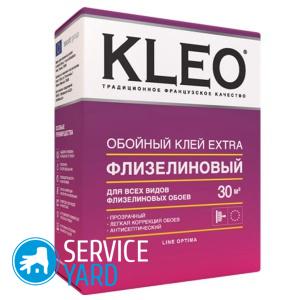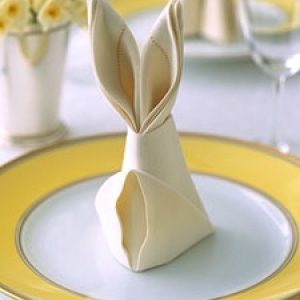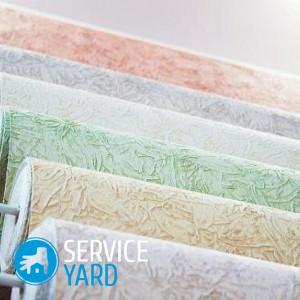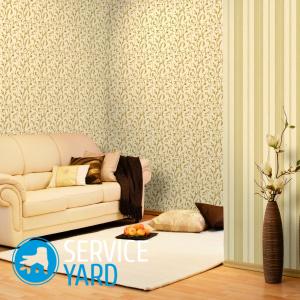How to cook a paste?
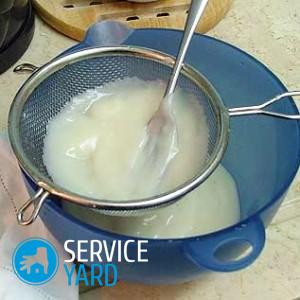
The need to glue different materials arises almost daily. All kinds of repairs, children's crafts, arts and crafts - but how many situations when you need a good reliable glue? In construction and office stores you will find a variety of compositions - both designed for certain materials, and universal. But for some works, the one that is made at home from flour or starch is most suitable. How to cook a paste? Now you will find out.
to contents ↑Why do you need a paste?
It would seem that there are no problems with adhesives now. Get into the catalog, and choose what your soul wants. And in construction stores the assortment is also quite large, so why else invent something yourself? Not so simple.
Grandma’s wallpaper paste is truly universal. It fits:
- for repair - excellently holds wallpaper;
- for fastening decorative elements on wallpaper;
- for pasting windows;
- for the manufacture of all sorts of interesting gadgets from papier-mâché;
- for gluing some fabrics;
- for starching - in this case, the composition will be less dense.
What are we repairing?
Let's start with the most popular use of starch glue - wallpapering a room. Such a composition has a number of advantages over ready-made ones. Flour paste for wallpaper:
- absolutely harmless, since exclusively environmentally friendly materials are used for its manufacture;
- cheap, even if you take the best flour;
- he does not have to be insisted;
- you can do more than once;
- it does not react with the environment, and accordingly - it does not decompose and does not emit harmful substances;
- practically does not smell during work and does not smell at all after it dries;
- you can glue any wallpaper on it - from very thin paper to heavy fabric on non-woven;
- the canvas does not peel off over time;
- there are no spots on the paper after the glue dries.
to contents ↑Important! Flour or starch paste is almost flawed. The only negative is that you still need to cook it, and you will have to deal with boiling water.
If, judiciously assessing your strength and the availability of free time, you have come to the conclusion that you still don’t need to start preparing the building mixture with your own hands, use our review to choose a quality glue for wallpaper.
Choose the ingredients
For a paste equally suitable:
- flour;
- starch.
There is not much difference, so if there is starch - excellent, if it is not, but you really like to bake buns and you always have everything for this - there is a solution right away. So before you cook a paste of flour paste for wallpaper, look at what is in your kitchen cabinet. In principle, any flour is suitable, but it is better to choose the lightest wheat that you can find. Simply, the lighter the paste, the better. Starch is the most common, potato, but corn is also suitable.
to contents ↑Flour paste
To weld wallpaper glue with your own hands, you will need several things:
- flour;
- cold water;
- Bowl;
- spoon, fork, stick or whisk;
- pan.
To begin with, let's try to make the simplest composition, without any additives and technological difficulties. It is suitable for wallpaper, and for windows, and for children's crafts:
- Take 4 tablespoons of flour and pour them into a bowl.
- Add a little water there, so that you can stir the flour to a state of porridge.
- Stir the composition so that there are no lumps - the mass should be homogeneous and have the consistency of thick sour cream.
- Pour 1 liter of water into the pan.
- Put it on fire and bring to a boil.
- Pour in the same contents of the bowl, mix.
- As soon as you get something like batter (and it happens literally in ten seconds) - remove the pan from the heat.
- Allow the paste to cool.
to contents ↑Important! Flour or starch paste can be stored for three to four days, but after that it will go bad.
What to do with starch?
And how to cook a starch paste for wallpaper? Yes, almost the same as flour, although there are subtleties. For work, you will also need a sieve. The ratio of ingredients is the same as for flour, that is, 4 cups of starch per 1 liter of water:
- First of all, we sift the starch so that there are no lumps - it is not necessary to throw them away, you can just crush it and sift it again.
- Pour water into a saucepan and set on fire.
- When the water boils, carefully pour out the sifted starch (a very convenient thing is a paper bag with a torn corner, it makes it possible to evenly spread dry substances).
- After a few seconds, the composition will thicken, then the gas must be turned off, and if the stove is electric, remove the pan from the heat.
- After the paste has cooled down, it can be used.
to contents ↑Important! After you pour what you got into the jar, you need to wash the pan immediately - when the paste is dry, it will be much more difficult to clean the dishes.
Composition for starching
Some washing machines have a compartment for various additional compounds - starch or air conditioning. Mistresses usually use special formulations designed specifically for automatic machines.
Important! This method has only one drawback - all linen is processed at once, even one that does not need it.
But small things can be starchy and manually - collars and skirts from children's Christmas costumes, for example. To do this, just take 2 tablespoons of starch in 1 liter of water. And then - everything is exactly the same as for the paste, that is, sift the starch, boil water and get the right substance. If the product can be boiled, nothing prevents putting it into the composition immediately, as soon as the paste is cooked.
Important! Processing time depends on how well the product should hold its shape. If you want it to turn tough, hold it for an hour and a half, then iron it. However, this result can be achieved in another way - by making a more concentrated composition, the same as for wallpapering. What you want to slightly starch, just immerse in a pan, and then remove, wring and dry.
There are other recipes for preparing a solution that are used for different things. If this topic is of interest to you, then click on the links and see information from our thematic articles:
to contents ↑PVA Wallpaper Adhesive
If you want to glue heavy wallpapers, it is best to make a paste with PVA. Well, then surely no power wallpaper will tear off the wall. The first stage is exactly the same as for the preparation of a regular paste:
- Sift the starch.
- We heat the water.
- Pour the starch.
- Stir (if the volume is large, you can use a wooden spatula or even just a stick).
- Add PVA glue.
- Bring to a boil.
- Mix thoroughly again.
- As soon as an adhesive is formed in the pan (that is, almost immediately), remove from heat.
- We take the second pan, cover it with a piece of gauze.
- We filter the contents of the first pan until it has cooled.
This homemade wallpaper glue is most suitable for working with light wallpaper. If you need to glue the dark, you can add not PVA, but wood glue. If there is no lump in the PVA paste, you can not filter it.
to contents ↑Important! Do not forget that the quality of the adhesive mixture is only part of the competent decoration of the room. Be sure to check out the recommendations and useful tips on decorating rooms so that you don’t have problems with this:
Dextrin paste
This composition is perfect for complex crafts from paper, fabric and other materials, as well as for decorating walls with decorative elements, making jewelry and other purposes. To prepare such a paste, you need:
- 0.5 cups of water;
- 1 tablespoon of starch;
- 0.5 teaspoon of sugar.
Sift starch, of course, have to. But this is not the only thing to be done to prepare this difficult, but very strong composition:
- Pour the sifted starch onto a baking sheet.
- Preheat the oven to 400 ° C.
- Warm the starch at this temperature for an hour - it should turn into brown lumps.
- Cool.
- Grind into powder.
- Bring the water to a boil.
- Pour starch into a saucepan.
- Pour sugar there.
Stock footage
Such glue perfectly connects surfaces, and it is almost invisible, so do not be afraid that you will do something inaccurately. In a word, ancient recipes remain relevant to this day, not without reason they have existed for several centuries.




